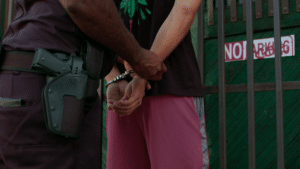While juvenile crime statistics in Central Florida reflect an overall decrease in the rate of crime in recent years, the nature of juvenile crimes has turned more violent. The Orlando Sentinal reports that youth gangs are driving the trend.
Orlando Police Department Chief Eric Smith said at a recent press conference that he wants to strengthen the Juvenile Justice system, and he called for harsher penalties for juveniles involved in gang crimes. “We have seen an increase in gang activity throughout the city,” he said. “A lot of the crimes that we are having are coming from younger individuals.” Typical violent crimes in Central Florida include murder, robbery, battery, carjacking, and home invasion.
Juvenile Crime Statistics and the Law
Juvenile crime is a growing concern in Central Florida, which comprises several counties, including Orange, Osceola, Seminole, and Lake. A juvenile crime is considered an offense committed by a person under the age of 18. While the United States has a juvenile justice system that focuses on rehabilitation, there are still cases where children are tried as adults for their crimes instead of in juvenile court.
According to the Florida Department of Juvenile Justice, there were more than 15,000 delinquency cases in the region last year. About half of the youths arrested in Central Florida were charged with felonies, with offenses ranging from theft and burglary to drug possession and assault. Other common juvenile offenses include possession of drugs or alcohol, burglary or theft, and assault with bodily harm.
This trend in juvenile crime statistics is particularly alarming given the long-term negative consequences that can result from juvenile criminal behavior, including reduced employment opportunities, mental health issues, and a higher likelihood of engaging in criminal activity as an adult. That’s why parents and guardians need to understand the different types of juvenile crime charges for juveniles so they can hire an experienced juvenile crimes defense lawyer if necessary.
What’s Contributing to the Violent Trend in Juvenile Crime Statistics
Several factors contribute to juvenile crime in Central Florida. One of the primary factors is poverty. Young people who grow up in low-income households are more likely to engage in criminal activity as a means of survival. They may also have limited access to education, healthcare, and other resources that can help them avoid negative behaviors.
Poverty is also a factor in the rise in gang activity reflected in juvenile crime statistics. Gangs are prevalent in many Central Florida neighborhoods, often targeting vulnerable young people seeking a sense of belonging. Gang involvement can lead to drug use, violence, and other criminal activities, which can have long-term negative consequences for young people.
Finally, mental health issues can also contribute to juvenile crime. Many young people who engage in criminal behavior have underlying mental health conditions, such as depression, anxiety, or trauma. These issues can go untreated or undiagnosed, leading young people to turn to negative behaviors as a means of coping.
Juvenile crime also has long-term negative consequences for young people themselves. A juvenile record can make it difficult to find employment or further their education, leading to a cycle of poverty and negative behaviors. It can also lead to mental health issues, such as anxiety and depression, which can have long-term negative consequences for their overall well-being.
Another effective program is the Juvenile Assessment Center (JAC) in Orange County, which provides a range of services for young people who have been arrested or are at risk of engaging in criminal behavior. The JAC offers mental health counseling, substance abuse treatment, and other services to help young people get back on track.
Juvenile Justice System in Central Florida
The juvenile justice system in Central Florida is designed to provide rehabilitation and support for young people who have engaged in criminal behavior. The system is focused on providing young people with the resources they need to make positive changes in their lives, rather than simply punishing them for their actions.
One important aspect of the juvenile justice system is diversion programs, which aim to divert young people away from the criminal justice system and towards community-based programs. These programs provide young people with support and resources to help them make positive changes in their lives and avoid future criminal behavior.
Rehabilitation and Reintegration of Juvenile Offenders
Rehabilitation and reintegration programs are critical to helping juvenile offenders successfully re-enter society. These programs provide young people with the skills and resources they need to make positive changes in their lives and avoid future criminal behavior.
One effective program is the Department of Juvenile Justice’s (DJJ) Transitional Services Program (TSP), which provides young people with education, employment, and other resources to help them successfully transition back into their communities. Another program is the DJJ’s Aftercare Program, which provides ongoing support for young people after they have completed their sentences.
The best way to deal with criminal charges involving a minor is to talk to an experienced Juvenile Defense Attorney.










